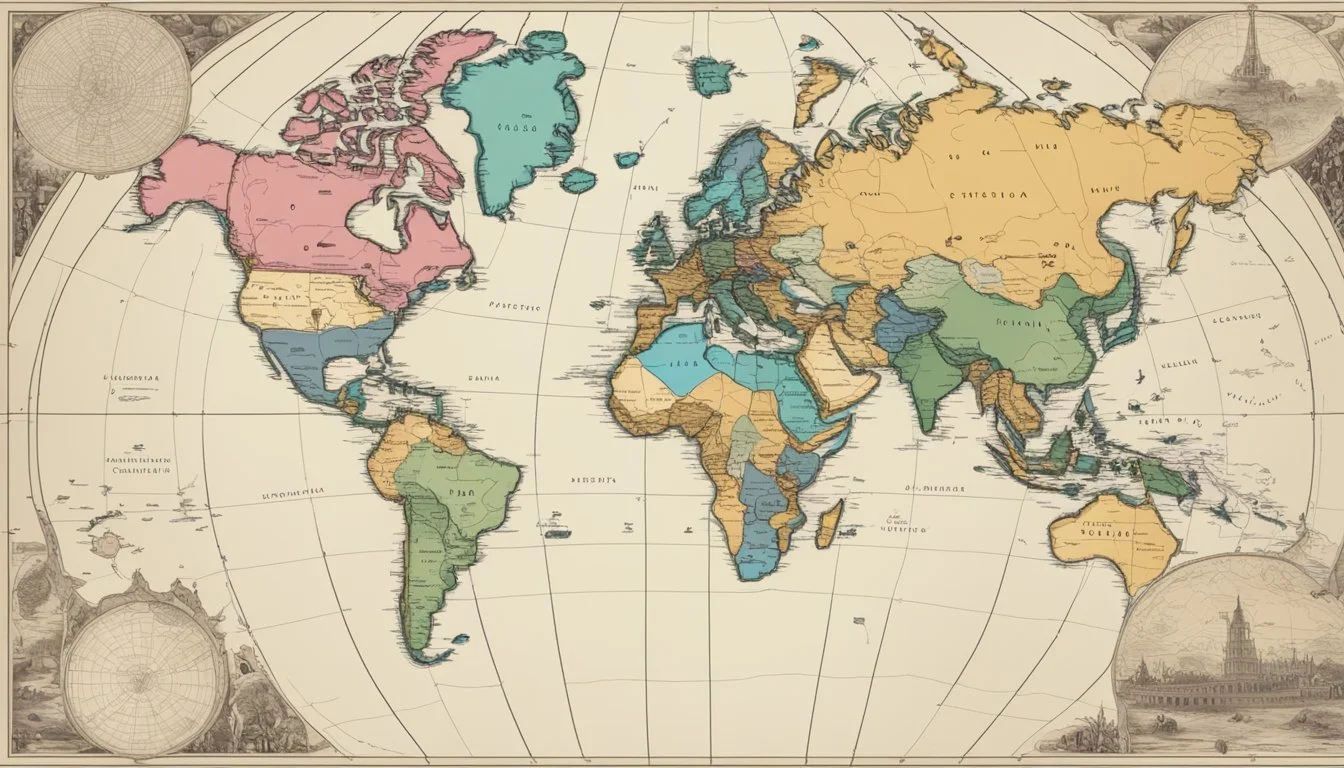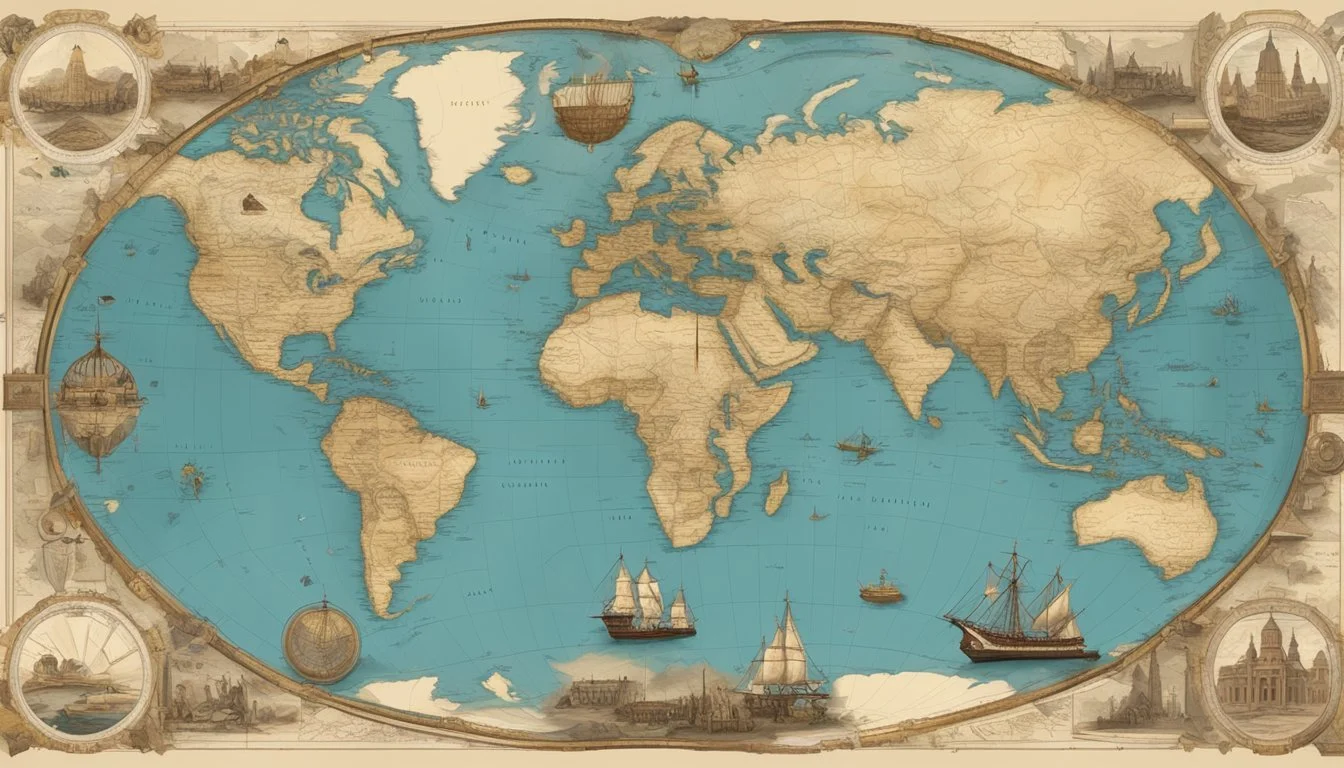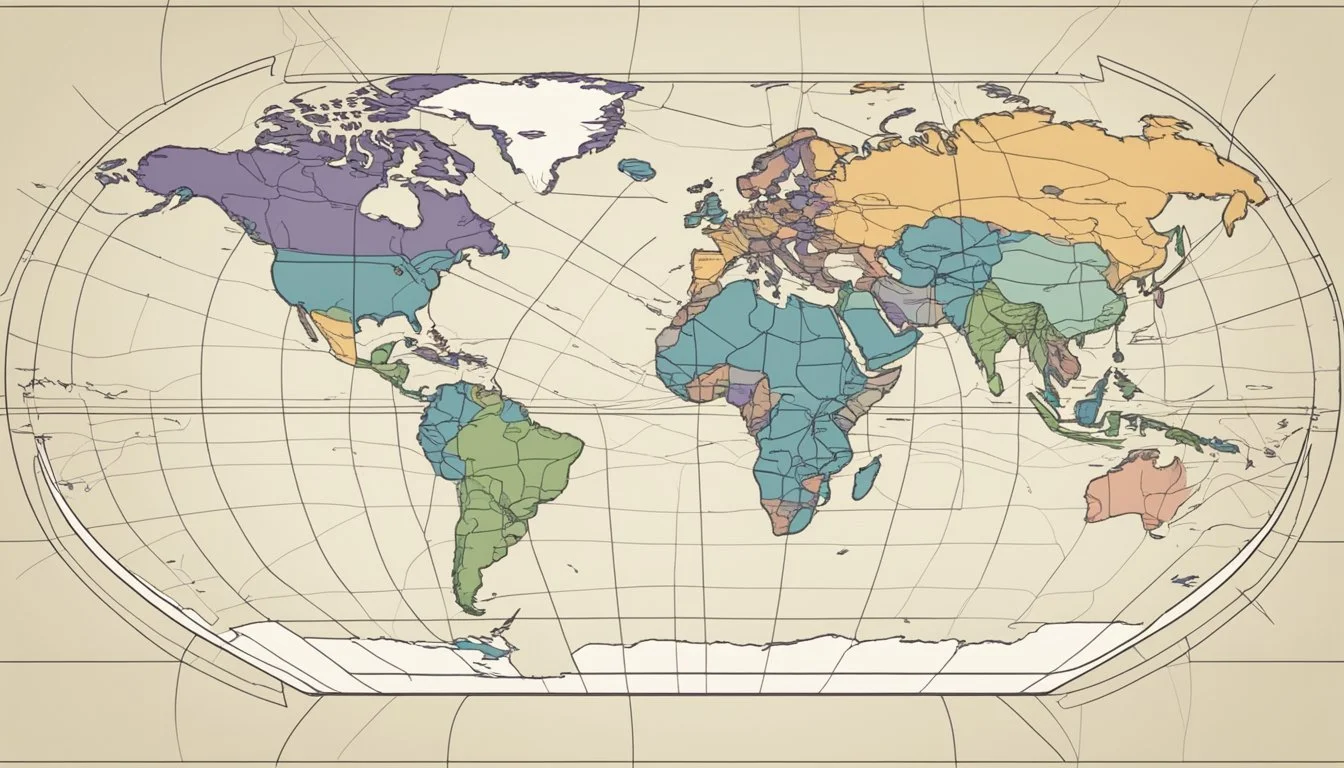8 Films on the Age of Imperialism and its Global Consequences
A Cinematic Journey Through Colonial Power and Its Aftermath
The Age of Imperialism left an indelible mark on world history, shaping geopolitics, cultures, and societies across the globe. From the mid-18th century to the early 20th century, major powers like Britain, France, Germany, and the United States expanded their empires, profoundly impacting the territories they colonized.
Films exploring this era provide valuable insights into the complex dynamics of imperialism and its lasting consequences. Through cinematic storytelling, viewers can gain a deeper understanding of the motivations behind colonial expansion, the experiences of both colonizers and colonized peoples, and the long-term effects that continue to resonate in our modern world.
1) The Man Who Would Be King
The Man Who Would Be King, released in 1975, is a captivating adventure film directed by John Huston. Based on Rudyard Kipling's 1888 novella, it stars Sean Connery and Michael Caine as two British soldiers who become kings in Kafiristan, a remote region of Afghanistan.
Set during the height of British imperialism, the film explores themes of colonialism, cultural exploitation, and the consequences of unchecked ambition. The protagonists' journey from soldiers to self-proclaimed rulers reflects the era's colonialist mindset.
The movie vividly portrays the clash between Western imperialism and indigenous cultures. It depicts the complexities of imposing foreign rule on a society with its own established traditions and beliefs.
Huston's direction brings Kipling's story to life with stunning visuals and compelling performances. The film's narrative serves as a critique of imperial ambitions and the hubris of those who seek to dominate unfamiliar lands.
The Man Who Would Be King offers a nuanced look at the age of imperialism, showcasing both the allure of power and the ultimate folly of attempting to rule over others through deception and force.
2) Zulu
"Zulu" is a 1964 British epic war film directed by Cy Endfield. Set during the Anglo-Zulu War of 1879, it depicts the Battle of Rorke's Drift between the British Army and the Zulu Kingdom.
The film stars Stanley Baker and introduces Michael Caine in his first major role. It portrays the defense of a mission station by 150 British soldiers against an assault by 4,000 Zulu warriors.
"Zulu" was praised for its gripping narrative and intense performances. It became one of the highest-grossing films of 1964 and is now considered a classic in the war film genre.
The movie offers a complex view of imperialism. While it showcases British military prowess, it also portrays the Zulu warriors with respect and dignity.
Critics have debated the film's stance on colonialism. Some argue it glorifies imperial conquest, while others see it as a nuanced exploration of the era's complexities.
"Zulu" remains influential 60 years after its release. It continues to spark discussions about the portrayal of historical events and the legacy of the British Empire in cinema.
3) The Four Feathers
The Four Feathers, based on A.E.W. Mason's 1902 novel, has been adapted into multiple films over the years. The story explores themes of honor, redemption, and British imperialism during the late 19th century.
Set against the backdrop of the Sudanese uprising of 1882, the narrative follows a young British officer who faces accusations of cowardice. He must prove his bravery in a foreign land, confronting both personal and imperial challenges.
The 1939 version, produced by Alexander Korda, is particularly notable. It showcases stunning cinematography and captures the spirit of the era. This adaptation reflected the attitudes of its time, portraying a romanticized view of the British Empire.
Later adaptations, such as the 2002 film, approached the subject matter differently. They offered more critical perspectives on imperialism and its consequences, reflecting changing societal views.
The Four Feathers serves as a lens through which audiences can examine the complexities of colonial history. It highlights the personal costs of empire and the evolving perceptions of imperial adventures over time.
4) Khartoum
Khartoum, released in 1966, is a British epic war film that portrays the Siege of Khartoum during the Mahdist War. Directed by Basil Dearden, the film stars Charlton Heston as General Charles Gordon and Laurence Olivier as Muhammad Ahmed, the Mahdi.
The movie dramatizes the historical events of 1884-1885 when Gordon led the defense of Khartoum against the Mahdist forces. It captures the clash between British imperialism and Sudanese resistance, highlighting the complex motivations of both sides.
Khartoum offers a vivid depiction of the period's geopolitical tensions. The film explores themes of religious fervor, military strategy, and the moral dilemmas faced by colonial powers in Africa.
The cinematography showcases the harsh Sudanese landscape, providing a backdrop for the unfolding drama. Heston's portrayal of Gordon as a principled but conflicted leader adds depth to the historical narrative.
While the film presents a largely Western perspective on events, it attempts to give some insight into the Sudanese viewpoint through Olivier's portrayal of the Mahdi. Khartoum serves as a cinematic window into a pivotal moment in the age of imperialism and its far-reaching consequences.
5) The Mission
"The Mission" (1986) offers a powerful portrayal of colonialism in 18th-century South America. Directed by Roland Joffé, the film explores the complex relationships between Jesuit missionaries, Spanish colonizers, and indigenous Guaraní people.
Set against the backdrop of the Treaty of Madrid, which redrew colonial boundaries, the film highlights the conflict between religious and imperial interests. Jeremy Irons plays Father Gabriel, a Jesuit priest who establishes a mission in Guaraní territory.
Robert De Niro portrays Rodrigo Mendoza, a former slave trader who seeks redemption by joining the Jesuit order. Their characters represent differing approaches to interacting with indigenous communities.
The film depicts the devastating impact of European colonization on native populations. It showcases the forced relocation of indigenous people and the destruction of their way of life.
"The Mission" received critical acclaim for its stunning cinematography and Ennio Morricone's haunting score. It won the Palme d'Or at the Cannes Film Festival and an Academy Award for Best Cinematography.
Through its narrative, the film raises questions about cultural imperialism, religious conversion, and the human cost of colonial expansion. It serves as a thought-provoking examination of a pivotal period in global history.
6) Gandhi
Richard Attenborough's 1982 biographical film "Gandhi" stands as a landmark portrayal of Mahatma Gandhi's life and his fight against British imperialism. The movie stars Ben Kingsley in a career-defining role as the Indian independence leader.
"Gandhi" traces the protagonist's journey from his early days as a lawyer in South Africa to his pivotal role in India's struggle for freedom. It showcases his philosophy of non-violent resistance and its impact on the colonial power structure.
The film depicts key historical events such as the Salt March and the Partition of India. It also explores Gandhi's personal relationships and inner conflicts, providing a nuanced view of the man behind the political figure.
Attenborough's direction and Kingsley's performance bring Gandhi's charisma and conviction to life on screen. The film's epic scale and attention to historical detail earned it eight Academy Awards, including Best Picture and Best Actor.
"Gandhi" not only educates viewers about a crucial period in history but also raises questions about colonialism, civil disobedience, and the power of peaceful protest. Its portrayal of Gandhi's life continues to inspire discussions on leadership and social change.
7) Lagaan: Once Upon a Time in India
Lagaan, released in 2001, is a landmark Indian film that explores the themes of colonialism and resistance in British-ruled India. Set in 1893, the movie depicts a small village's struggle against oppressive taxation imposed by their British rulers.
The film centers around a high-stakes cricket match between the villagers and the British officers. If the villagers win, they will be exempt from paying the lagaan (land tax) for three years. If they lose, they must pay triple the tax.
Directed by Ashutosh Gowariker and produced by Aamir Khan, who also stars in the lead role, Lagaan masterfully blends elements of sports drama, romance, and historical fiction. The film's ensemble cast includes Gracy Singh, Rachel Shelley, and Paul Blackthorne.
Lagaan received critical acclaim for its portrayal of colonial-era India and the power dynamics between the rulers and the ruled. The film's epic scale, memorable musical numbers, and compelling storytelling contributed to its success both domestically and internationally.
As a period piece, Lagaan offers a vivid glimpse into the social and political landscape of late 19th-century India. It showcases the resilience and unity of ordinary people in the face of imperial oppression.
8) The Last Samurai
"The Last Samurai" (2003) explores the clash between tradition and modernization in late 19th-century Japan. Set during the Meiji Restoration, the film depicts the struggles of samurai resisting Western influence and rapid societal changes.
Tom Cruise portrays Nathan Algren, an American military officer hired to train the Japanese imperial army. He becomes captivated by samurai culture after being captured by rebel samurai led by Katsumoto, played by Ken Watanabe.
The film showcases the conflict between traditional samurai values and the push for modernization. It highlights the government's efforts to westernize Japan's military and society, while some samurai fight to preserve their way of life.
Although fictionalized, the movie draws inspiration from real historical events. The Satsuma Rebellion of 1877 serves as a backdrop for the samurai uprising depicted in the film.
"The Last Samurai" presents a romanticized view of samurai culture and its demise. It contrasts the honor-bound warriors with the perceived corruption of modernization and commercialization.
The film raises questions about cultural preservation, the impact of imperialism, and the costs of progress. It offers a unique perspective on a pivotal moment in Japanese history through a Western lens.
Historical Context of Imperialism
Imperialism shaped global power dynamics and cultural interactions from the 15th to 20th centuries. European nations expanded their influence across continents, establishing colonies and spheres of control.
Origins and Expansion
The Age of Exploration in the 15th century sparked European imperialism. Portugal and Spain led early colonial efforts, followed by other European powers. Technological advances in navigation and weaponry facilitated expansion.
Motivations for imperialism included:
Economic gain through resource extraction
New markets for manufactured goods
Prestige and national pride
Religious and cultural evangelism
The Industrial Revolution accelerated imperialism in the 19th century. European nations sought raw materials and new markets for their factories. Africa became a major target, with European powers dividing the continent at the 1884-1885 Berlin Conference.
Major Empires and Their Influence
The British Empire was the largest, controlling territories on six continents at its peak. It spread the English language and British cultural norms globally.
Other significant empires included:
Spanish Empire: Dominated Latin America and the Philippines
French Empire: Extensive holdings in Africa and Southeast Asia
Dutch Empire: Focused on maritime trade in Asia and the Caribbean
Russian Empire: Expanded across Northern Asia
These empires reshaped local cultures, economies, and political systems. They introduced new technologies and ideas but also exploited resources and labor. The legacy of imperialism continues to influence international relations and cultural identities today.
Cultural and Social Consequences
The age of imperialism profoundly reshaped cultures and societies across the globe. It led to the erosion of indigenous traditions and restructured local social hierarchies.
Impact on Indigenous Cultures
Imperial powers imposed their languages, religions, and customs on colonized peoples. This often resulted in the suppression or loss of native languages and cultural practices. In many cases, traditional knowledge systems and spiritual beliefs were marginalized or outlawed.
European-style education systems were introduced, altering how knowledge was transmitted between generations. Western art, literature, and music gained prominence, sometimes at the expense of local creative expressions.
The introduction of new technologies and consumer goods changed daily life in colonized territories. This led to shifts in traditional economic activities and social patterns.
Changes in Social Structures
Imperialism disrupted existing social hierarchies and power dynamics. Colonial administrators often favored certain ethnic or social groups, creating new elite classes and exacerbating existing divisions.
Traditional leadership roles were undermined as colonial powers installed their own governance structures. This weakened the authority of local chiefs, elders, and religious leaders.
The imposition of Western legal systems altered property rights and inheritance practices. This particularly affected women's status in many societies.
New urban centers emerged, drawing people from rural areas and reshaping settlement patterns. This urbanization led to the breakdown of traditional community structures and the rise of new social classes.







